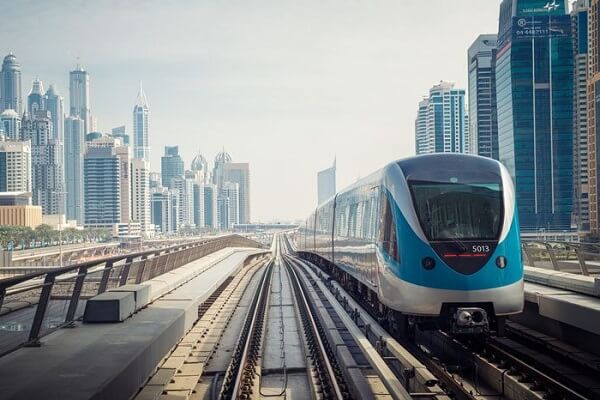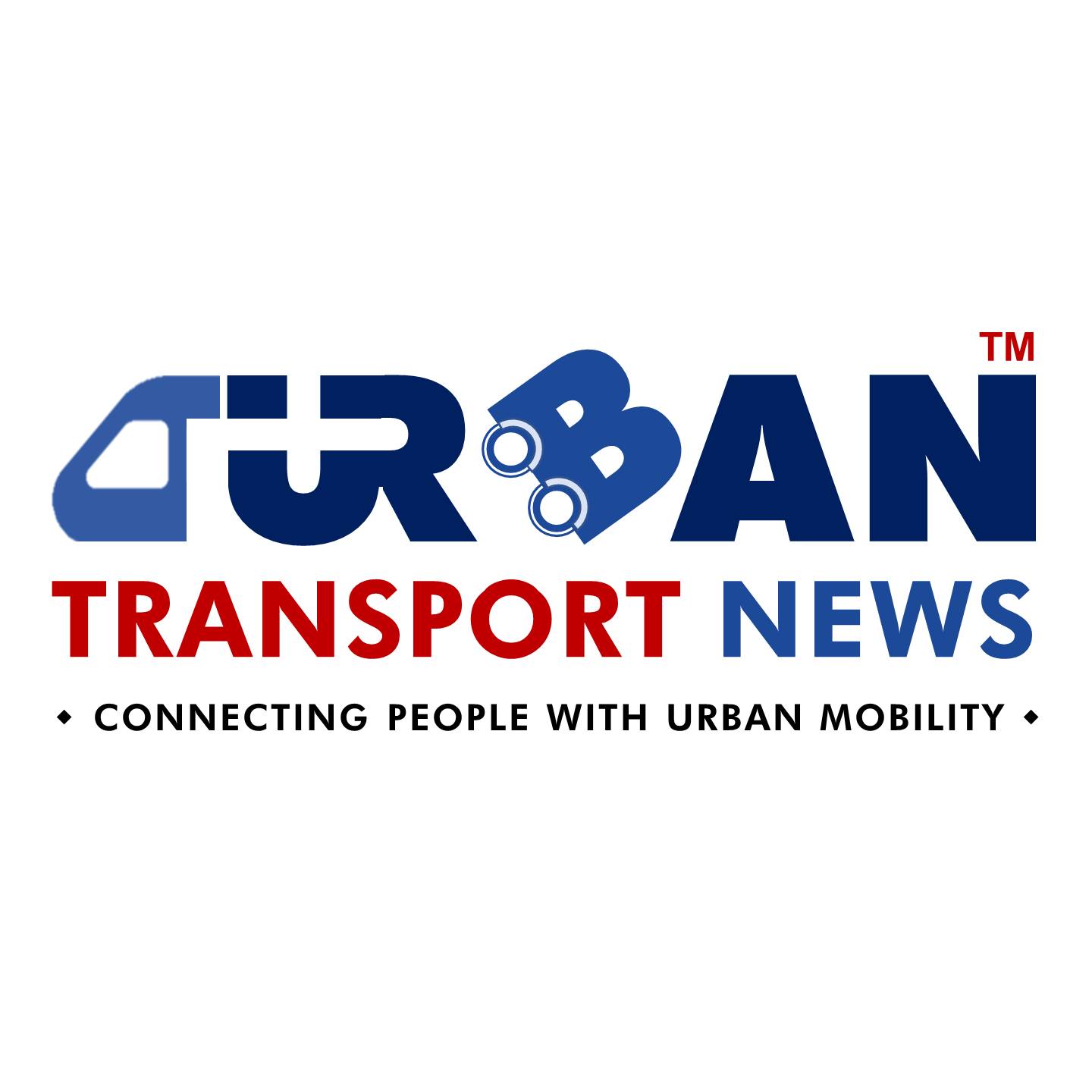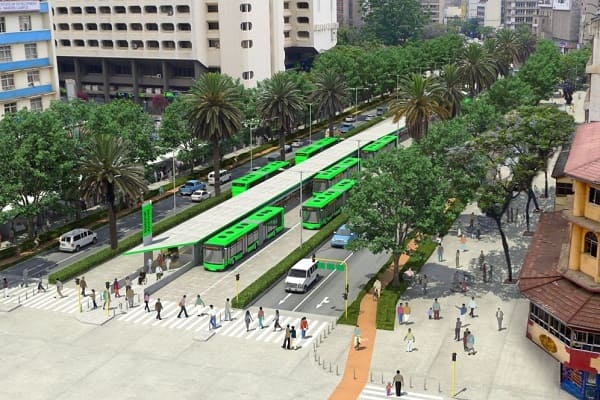 Delhi unveils ambitious Urban Mobility Vision: Luxury Metro Coaches, New Tunnels and Pod Taxi
Delhi unveils ambitious Urban Mobility Vision: Luxury Metro Coaches, New Tunnels and Pod Taxi Qatar approves Saudi Rail Link Agreement, Accelerating Gulf Railway Vision 2030
Qatar approves Saudi Rail Link Agreement, Accelerating Gulf Railway Vision 2030 UP Govt plans to introduce Water Metro services in Ayodhya, Varanasi & Prayagraj
UP Govt plans to introduce Water Metro services in Ayodhya, Varanasi & Prayagraj India’s First Urban Ropeway begins Trial Run in Varanasi, Set to carry 1 Lakh passengers daily
India’s First Urban Ropeway begins Trial Run in Varanasi, Set to carry 1 Lakh passengers daily India and Bhutan to Build First-Ever Rail Link: ₹4,033 Cr Project to Boost Regional Connectivity
India and Bhutan to Build First-Ever Rail Link: ₹4,033 Cr Project to Boost Regional Connectivity Patna to launch Eco-Friendly Water Metro; Trial Run soon between Digha and Kangan Ghats
Patna to launch Eco-Friendly Water Metro; Trial Run soon between Digha and Kangan Ghats Air India Group set to launch Flights Operations from Navi Mumbai International Airport
Air India Group set to launch Flights Operations from Navi Mumbai International Airport Chennai to launch 25-Year Mobility Plan with Unified QR Ticketing and One-App Transit System
Chennai to launch 25-Year Mobility Plan with Unified QR Ticketing and One-App Transit System Kochi Metro bags ₹4.4 crore contract to prepare DPR for Mumbai Water Metro Proejct
Kochi Metro bags ₹4.4 crore contract to prepare DPR for Mumbai Water Metro Proejct Navi Mumbai International Airport set for September launch; IndiGo and Akasa Air to lead Operations
Navi Mumbai International Airport set for September launch; IndiGo and Akasa Air to lead Operations
From passion to innovation: The role of Artificial Intelligence in the evolution of digital mobility

Kenza Saiah is a senior AI expert and the head of the AI R&D program in Alstom’s Urban Integrated Control Center department. In this role, she also oversees doctoral theses in AI applied to the rail industry and actively contributes to Alstom’s efforts to encourage students – particularly women – to choose rewarding technical careers.
Prior to joining Alstom, Kenza had already held numerous positions in AI R&D, particularly in the automotive sector, working with industry leaders such as PSA (now Stellantis), Valeo and Thales, as well as public research institutes. She holds a PhD in AI from Pierre and Marie Curie University, as well as two master’s degrees in AI/Decisions and Data Mining/Business Intelligence, and a first degree in Engineering.
After deciding to study engineering, which she believed would make good use of her analytical and mathematical skills, Kenza specialized in data mining, business intelligence and AI. Today, 15 years later, she is still excited to be working in a field that can change lives. She’s happy to report that she’s always been supported in this traditionally male-dominated field – and not just by other women.
Kenza leads the AI R&D program at Alstom’s Urban Integrated Control Center. This department offers automatic train supervision (ATS) solutions, or advanced traffic regulation and operations management functionalities for a complete vision of networks. It also offers a station and fixed equipment management system (SCADA), as well as a communication and security system (ISM) to optimize train movements and maintenance.
With her team, she’s in charge of delivering innovative solutions based on AI algorithms to boost service quality and sustainability. This can mean using machine-learning algorithms to predict network ridership and adapt supply to passenger demand for the best possible service quality. It can mean orchestrating train arrivals and departures to recover energy from regenerative breaking – in other words, using the energy produced by a train arriving at a station to start another train leaving the station. And AI can also enable predictive maintenance, which helps increase the life of rolling stock by identifying anomalies and raising alerts before scheduled maintenance. These are just some examples.
As Kenza explains, “We have to find the right trade-off between many parameters to achieve our goal, which in addition to making travel sustainable is to avoid any delays in train timetables. When unexpected events occur, like passengers holding the train doors, we need to handle them effectively and reduce delays. To do that, we need to take the right decisions, like reducing dwelling time at stations. These decisions are aided by AI.”
To simplify a complex topic, AI is a data science tool that helps humans extract more information from the available data, and faster. To do this, Alstom uses machine learning algorithms and deep learning algorithms. With machine learning, humans write algorithms to enable machines to learn from a vast amount of data, whereas with deep learning (a subset of machine learning), artificial networks build on this intelligence to adapt by themselves.
Today, customers of Alstom’s Urban Integrated Control Center are eager for the latest AI solutions, but this hasn’t always been the case. In fact, just four years ago, when Kenza joined the team, she was the only one with AI expertise and had to overcome skepticism from both her colleagues and clients. “Although my initial AI proposals were perceived as promising, they had no proven track record in this field, so I had to work on convincing first myself, then my team and the domain experts by showing that AI-based solutions could be applied to mobility and our industry. People thought they would lose control over our systems, so I had to earn their trust by demonstrating the efficiency of AI algorithms compared to more classic solutions.”
According to Kenza, Alstom has been a pioneer in this field and remains a leader in AI-driven sustainable mobility. “Ten years ago, we didn’t imagine there’d be self-driving cars, which couldn’t happen without AI. It’s been the same in rail, where there’s a lot of focus on safety, so people preferred conventional solutions based on classic algorithms. But Alstom has made a bold decision, turning to trustworthy and robust AI solutions when traditional solutions have shown their limits. I think it’s the right way to have advanced, competitive solutions. Our customers are more and more demanding and they’re always looking for the most advanced solutions. We want to give them intelligent, sustainable mobility solutions with high-quality service for passengers.” She concludes, “AI has its place in this very challenging field.”





